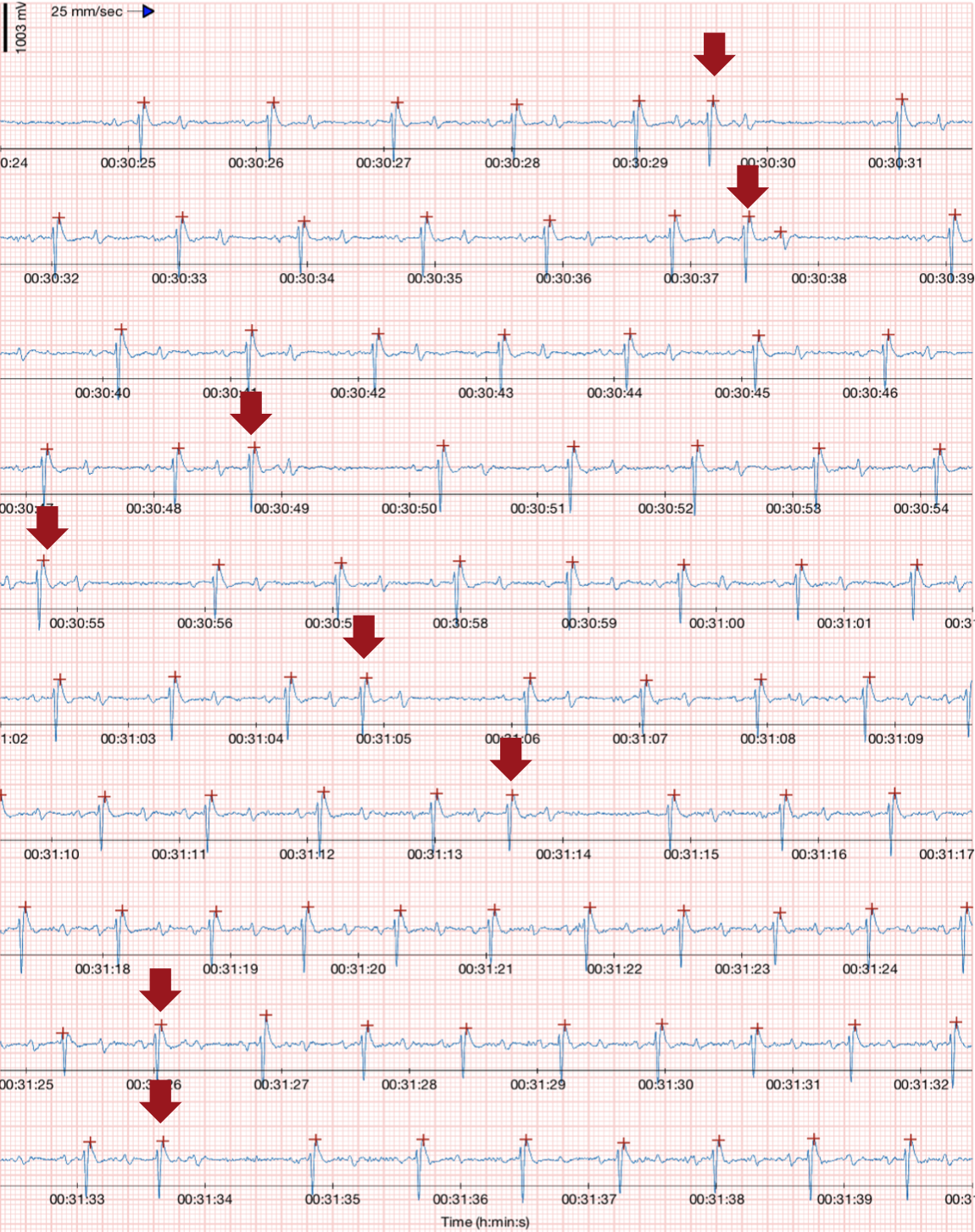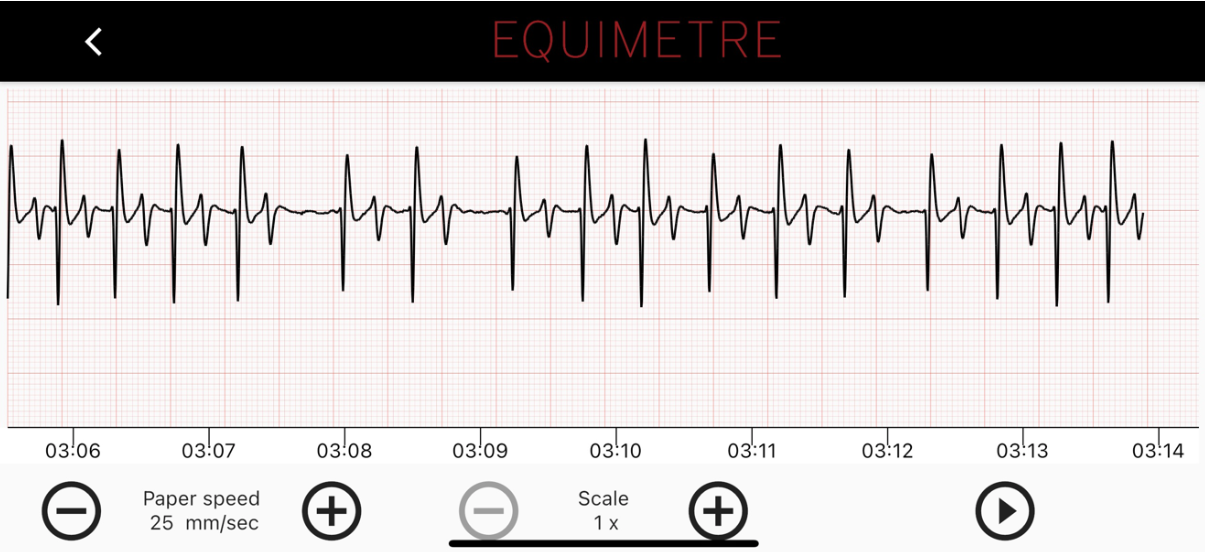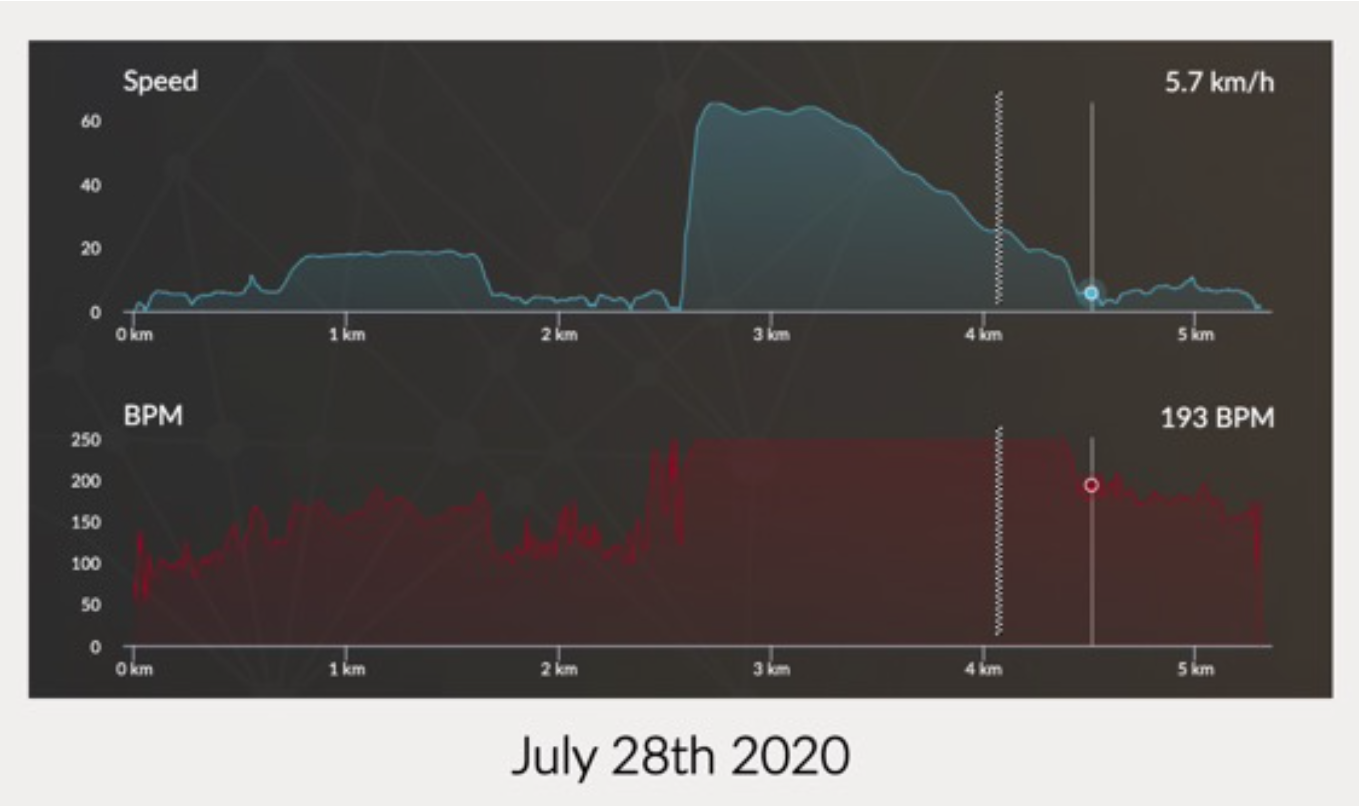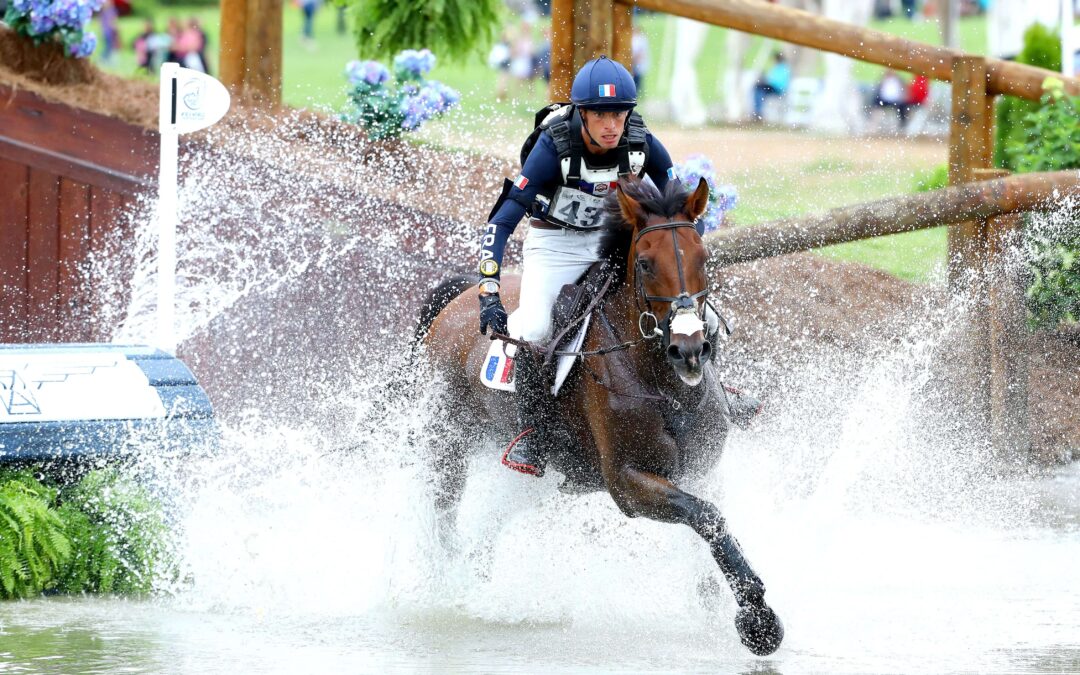Exercise ECG is an examination that records the electrical activity of the heart during training. It allows the analyse and control of the horse’s heart rhythm through an electrical curve of the heart activity. Often used at rest, it allows different analyses to be made during exercise, enabling a more accurate diagnosis.
What is the specificity of ECG during exercise? How can it be used in practice? What advantages does the interpretation of these data bring?
How does the ECG work?
The ECG, short for electrocardiogram, is a tool used in veterinary practice. It allows recording the electrical activity of the heart while representing it thanks to a graphic illustration, allowing then the reading of the results. The ECG has many medical uses, but it is also interesting from the point of view of sports performance. Indeed, it will allow one to visualize the level of training of a horse, its recovery capacity, or its current form. On the medical side, the ECG allows the user to measure the heart rate and thus visualize the potential appearance of cardiac pathologies.
ECG systems are equipped with electrodes and a sensor to record heart activity. In addition to veterinary tools, new technologies have allowed the development of sensors such as EQUIMETRE, able to collect the same parameters in autonomy, without wires, and store the data.
What are the advantages of using exercise ECG?
Exercise ECG is a medical examination that consists of recording the electrical activity of an individual’s heart when he is in full activity. In horses, the exercise ECG is used to measure cardiovascular health, fitness and athletic performance.
It has several advantages over a resting heart test. First, it can detect heart problems that would not be noticeable on a resting heart test. For example, arrhythmias may not appear at rest, but appear during exercise. The exercise ECG can also detect changes in heart function during exercise. This information is particularly important for horse athletes, as it allows them to optimize their training and performance by detecting cardiac problems that could limit their potential. It is also for this last reason that it may be interesting to set up an exercise ECG during a pre-purchase visit.
Working with standardized exercise test provides several benefits. First, it allows evaluation of cardiac function when the heart is subjected to significant physical stress. In addition, the exercise ECG allows us to see the interaction between the heart and the lungs, which can be important in diagnosing some respiratory pathologies. In contrast, the resting ECG measures cardiac function at rest, when the heart is less stressed. Particularly useful for assessing cardiovascular health, the examination is helpful before competition. It allows the evaluation of the horse’s physical condition and the detection of anomalies that could affect its performance. By setting up a regular follow-up of this parameter, the evolution of the physical condition will be visible and thus, the training will be able to be adapted for the horse.
How to set up a standardized exercise test with an ECG?
During the Atlanta and Beijing Olympic Games, due to the particular climatic conditions, some teams practiced exercise ECG on their horses. The examination allowed them to analyze the tolerance of the horses to perform in high temperature, high humidity, to identify their weak points and thus to take all the necessary precautions before the competitions.
Monitoring during exercise with an ECG is a multi-step process. First, the horse must be equipped with a sensor that collects data during exercise. Once set up, the horse is taken to exercise. Several exercise tests are possible:
-
- Lunging test
- Treadmill
- Dressage exercices
- Jumping test
- Maximum test to fatigue
- Standardized exercise est
- High speed test for racehorses
During the exercise, data is collected and recorded. Once the exercise is completed, the ECG data is analyzed. The veterinarian will review the results and look for anomalies. He will also look at the long-term time series results to detect any changes in the horse’s heart function.
To guarantee safety, well-being, and efficiency, the use of exercise ECG on horses necessitates specific measures. To get precise and reliable results, make sure the horse is in good health before the test. It is essential to ensure that the horse is not suffering from a fever, inflammation, or discomfort that might impair its performance during training. Also, in order to have the maximum reliability, it is necessary to have the same conditions for the exercise test at a few weeks interval, to track the progress of the horse, or on the contrary its loss of quality.
EQUIMETRE collect and store exercise ECGs for each horse that has been monitored. Thanks to a simple fixture system, the ECG is collected directly during training, on a daily basis, thanks to the trainer.
How to interpret the results of the exercise ECG? Case studies
Discover the story of Arionea, a 3 year old filly who had a promising 2 year-old season. She was restricted to a rest period due to an injured tendon, but bleeding following a light canter.
Thanks to the exercise electrocardiogram recorded with EQUIMETRE VET during the training, Arionea’s veterinarian noted 5 to 8 premature supraventricular contractions (SVPC) per minute.

Initial hypotheses of cardiac, respiratory, muscular, overtraining or fatigue problems were eliminated following medical checks: blood samples taken from the lungs and echocardiography showing no anomalies or inflammation. Exercise ECGs collected found that the arrhythmia was pain induced, while the echocardiogram revealed a tendon injury that had not fully healed. Subsequently, under anti-inflammatory treatment, fewer SVPCs were observed.
In this second case, Arion, a 5-year-old gelding trained in Australia showed an irregular heart rate during intense training. The trainer was also able to make the same observation during the next jumpout, and therefore forwarded the ECG to his veterinarian.

The speed and heart rate data collected allowed a more in-depth analysis. The heart rate reached levels above 250 bpm during training.

Finally, ECGs collected during training allowed for the diagnosis of atrial fibrillation during rapid recovery. The veterinarian advised Arion to be retired.
Conclusion
The exercise ECG is an key test to evaluate the cardiac health of athletic horses. It should not be neglected because it can reveal anomalies invisible to the naked eye but also with a rest ECG. The use of this technology on a regular basis is one of the methods for improving horse performance in sports.
SOURCES :
thomasguisnel (2020). L’ECG du cheval athlète. [online] Training solutions. Available at: https://training.arioneo.com/fr/blog-lecg-du-cheval-athlete/#:~:text=Suivre%20r%C3%A9guli%C3%A8rement%20l [Accessed 26 Apr. 2023].
Jeanneau, L. (2021). L’électrocardiogramme : travailler avec des ECG à pleine vitesse. [online] Vet Services. Available at: https://vet.arioneo.com/blog/lelectrocardiogramme-travailler-avec-des-ecg-a-pleine-vitesse/ [Accessed 26 Apr. 2023].
+, -( . %/ ( * *( 0( *1 2 3 4%1(%. (n.d.). Available at: https://mediatheque.ifce.fr/doc_num.php?explnum_id=20034 [Accessed 26 Apr. 2023]
Keywords: Exercise ECG, training, heart rate, EnvA, CIRALE
Photo credit @Sarah Farnsworth


